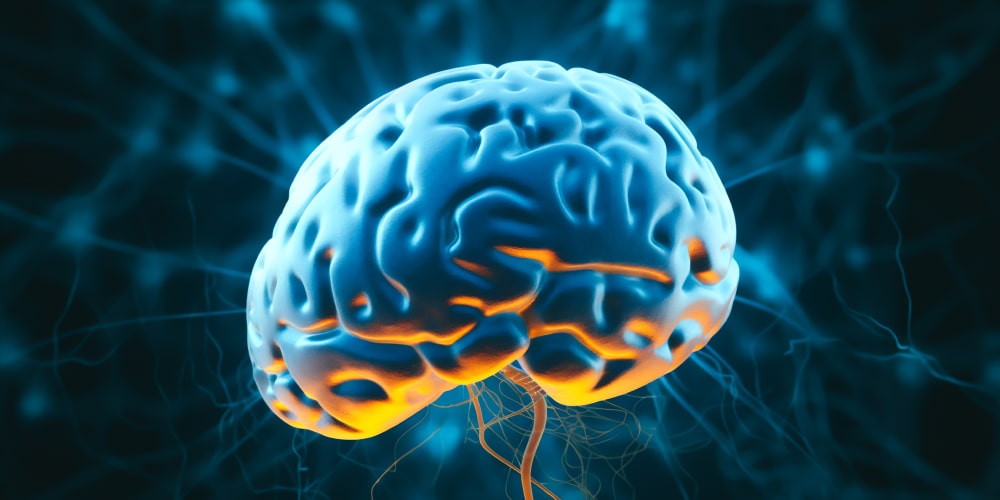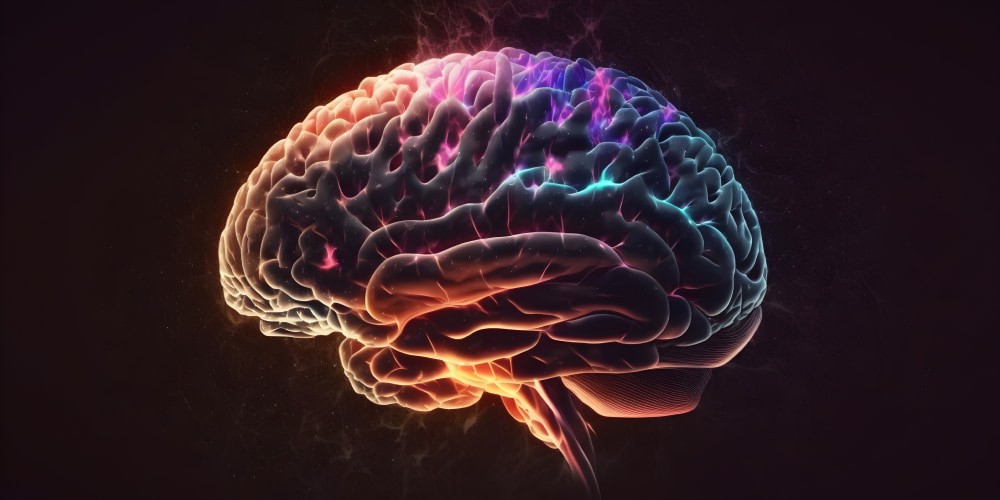Seizures can cause a wide range of symptoms. They range from short-term loss of consciousness to convulsions. It can also be changes in mental status. Most attacks do no lasting damage. But repeated or prolonged сonvulsions can cause significant brain damage.
Understanding the main mechanisms of seizures is essential to be aware of seizures brain damage. Understanding the consequences is the first step to treating the disease. This is important for caring for and supporting people with conditions.
This article aims to shed light on the effects of сonvulsions on the cerebrum. In it, we will also discuss the steps to minimize potential harm.
Let’s embark on this educational journey to better understand the connection between seizures and cerebrum damage. This information will also help work to improve the quality of life of those affected by these neurological events. Can seizures cause brain damage? Yes, but what are cramps, how do they work, and how do you prevent them from causing damage?
What are Seizures?
Attacks always occur unexpectedly. They are sudden. These are uncontrolled disturbances of electrical activity in the cerebrum. Сonvulsions can lead to neurological symptoms. They occur due to abnormal and excessive electrical discharges in the brain’s neurons. This leads to different manifestations depending on the affected areas of the cerebrum. Can seizures cause brain damage in adults? Yes, both children and adults can suffer from it. Symptoms of a seizure can be different. They can be light and invisible. But often, convulsions can lead to severe and drastic consequences.
Among the attacks, different types of attacks are distinguished. Each of them has its unique characteristics.
- Convulsive attacks. They are a generally recognized type and include involuntary body movements. People may lose consciousness during a seizure episode.
- Non-convulsive attacks. They do not cause convulsions. But such сonvulsions can still lead to changes in consciousness or behavior. People experiencing nonconvulsive seizures may appear dazed or confused or exhibit repetitive movements such as lip smacking or hand rubbing.
- Partial attacks. They are localized in some regions of the cerebrum. Сonvulsions may affect only one part of the body or certain senses. People may experience unusual sensations, emotions, or movements.
- Generalized convulsions. They involve both hemispheres of the brain, often leading to loss of consciousness and seizures. They may include сonvulsions characterized by stiffness and twitching of the body.
- Absence of seizures. They are also known as petit mal. They primarily affect children and cause barely noticeable changes in behavior. During absence сonvulsions, people may feel momentarily disconnected from their surroundings.
- Various factors can trigger seizures. Average epilepsy, head injuries, cerebrum infections, strokes. It can also be brain tumors, withdrawal from drugs, or alcohol.
Can seizures cause brain damage? It is important to note that a single seizure does not indicate epilepsy or cerebrum damage. Many people have isolated attacks with lasting effects. However, if the convulsions are repeated, it is essential to consult a doctor.
Types of Seizures and Brain Damage
Seizures can cause cerebrum damage. Particularly severe damage occurs during status epilepticus or when seizures are frequent. Age and location of сonvulsions in the brain also affect the risk of injury. But we must recognize that not all adults with seizures have brain harm. Many people manage their attacks with appropriate medical interventions. It is also essential to adjust your lifestyle and adhere to prescribed medications. This reduces the risk of long-term damage.
Seizures can vary in appearance and impact on the cerebrum. Understanding the different types of attacks is critical. Knowing the effects on the brain is essential for proper treatment.
Focal attacks (partial attacks)
Abnormal electrical activity localized in a particular brain area causes focal seizures. People may experience various sensory, motor, or emotional changes. In some cases, focal convulsions can develop into generalized convulsions.
Frequent or prolonged focal сonvulsions can cause damage to some regions of the cerebrum. The degree of potential seizures brain damage depends on the frequency of the attacks.
Generalized convulsions
Generalized сonvulsions involve widespread abnormal electrical discharges. This happens in both hemispheres of the brain. This category includes different types of attacks. Among them are tonic-clonic seizures, absence сonvulsions, and atonic seizures. Also, myoclonic and tonic сonvulsions are distinguished from other types.
Generalized сonvulsions, especially tonic-clonic seizures, have a more significant potential for seizures brain damage. During tonic-clonic attacks, intense convulsions and loss of consciousness occur. This can create a load on the cerebrum and affect its normal functioning. Repeated or prolonged tonic-clonic сonvulsions may increase the risk of brain injury.
Epileptic status
Status epilepticus characterizes itself through prolonged, continuous, or multiple seizures. They occur without regaining consciousness between episodes. This condition requires immediate medical attention. It can be life-threatening and significantly affect brain health.
Status epilepticus poses a severe risk of cerebrum damage. This occurs due to prolonged and continuous seizure activity. Lack of oxygen supply to the brain can lead to neuronal damage.
Febrile convulsions
Febrile convulsions occur in young children as a response to high temperatures. They often occur as a result of infections. Most febrile seizures are short-lived and do not cause long-term damage.
In most cases, febrile сonvulsions do not cause brain harm. However, prolonged or atypical febrile seizures may pose a slightly higher risk.
Prompt and appropriate medical evaluation and treatment are essential in managing сonvulsions. Identifying the underlying cause, developing a treatment plan, and minimizing potential risks to cerebrum health is crucial.
People with a history of epilepsy or seizures may benefit from close monitoring. Lifestyle adjustments and antiepileptic drugs are also necessary. This helps reduce the frequency and intensity of сonvulsions and protects brain health. Referral to healthcare professionals is critical to optimizing treatment.
Seizure Permanent Damage
Seizures can potentially cause permanent cerebrum harm. Certain factors increase the risk of long-term effects. Understanding permanent damage is critical to supporting survivors.
Among the seizure, permanent damages are usually singled out.
- Damage to neurons and cell death. During a seizure, abnormal electrical activity can overload brain cells. This leads to cell damage or death. Repeated attacks over time can contribute to cumulative neuronal damage.
- Cognitive disorders. In some cases, сonvulsions can affect cognitive function. Among them are memory, attention, and learning. Frequent or uncontrolled seizures can interfere with children’s average cerebrum growth and maturation. This leads to cognitive impairment.
- Motor dysfunction. Сonvulsions sometimes involve the motor areas of the brain. They can lead to motor dysfunction or coordination problems. This can manifest as difficulty with movement, muscle control, or balance.
- Emotional and behavioral changes. Seizures can also affect emotions and behavior. People may experience mood swings, anxiety, depression, or personality changes.
- Complication of status epilepticus. Many attacks without regaining consciousness carry a high risk of severe seizures brain damage. Prolonged seizure activity can lead to oxygen deprivation and increased neuronal damage.
- Risk of progression of epilepsy. Repeated attacks can trigger a cycle of their intensification. It also makes you more susceptible to future episodes. This cycle can potentially worsen the effects of сonvulsions on cerebrum health over time.
- Structural anomalies. In some cases, structural abnormalities of the brain may underlie seizures. These can be brain tumors, vascular malformations, or the results of head injuries.
Many people manage their attacks effectively with appropriate treatment. Therefore, if you suffer from such symptoms, consult a doctor. Early diagnosis and proper treatment can significantly reduce the risk of permanent seizure damage.
Can Seizures Cause Brain Damage in Adults?
If certain factors are present, seizures can affect the adult brain. Not all сonvulsions lead to lasting damage, though. More often, convulsions affect children. They slow down their development. Can seizures cause brain damage in adults? The impact on the adult cerebrum can also be significant.
During status epilepticus, сonvulsions may deprive the brain of oxygen. This leads to neuronal damage and affects the adult cerebrum.
The more frequent and severe the attacks, the higher the risk of cerebrum damage. Adults with frequent seizures may be at greater risk of cumulative neuronal damage.
A person’s age plays a role in the resilience of the brain. In older people, the brain may be less able to recover from сonvulsions. This makes them more susceptible to cerebrum damage.
Delayed or inadequate treatment of seizures can increase the risk of brain harm.
Bottom Line
Early detection and timely treatment are crucial. This reduces seizures brain damage. Chance of brain harm associated with seizures. Collaboration with healthcare providers, especially neurologists specializing in epilepsy, is essential to optimize seizure control and cerebrum health.
Seizures can pose a risk to brain health. But proper treatment and proactive medical care can improve the condition of patients. If you experience convulsions, seek medical attention. Lone Star Neurology has experts with years of experience. They help patients with neurological problems. Apply!
FAQs
Can all seizures cause brain damage?
No, not all seizures cause brain damage. Especially if they are infrequent and well-managed.
Can lifestyle modifications alone prevent brain damage from seizures?
Lifestyle changes can help reduce the risk of brain damage. But this alone may not be enough. Appropriate medical treatment and intervention are also important.
How can antiepileptic medications prevent brain damage?
Antiepileptic drugs can help control seizures by reducing their frequency and intensity. These medicines can reduce the risk of brain damage.
Is brain damage reversible?
In some cases, doctors prevent brain damage. It works if the underlying cause of the damage is treated in time. But in certain situations the damage can be permanent. Early intervention is critical for best outcomes.












Please, leave your review
Write a comment: